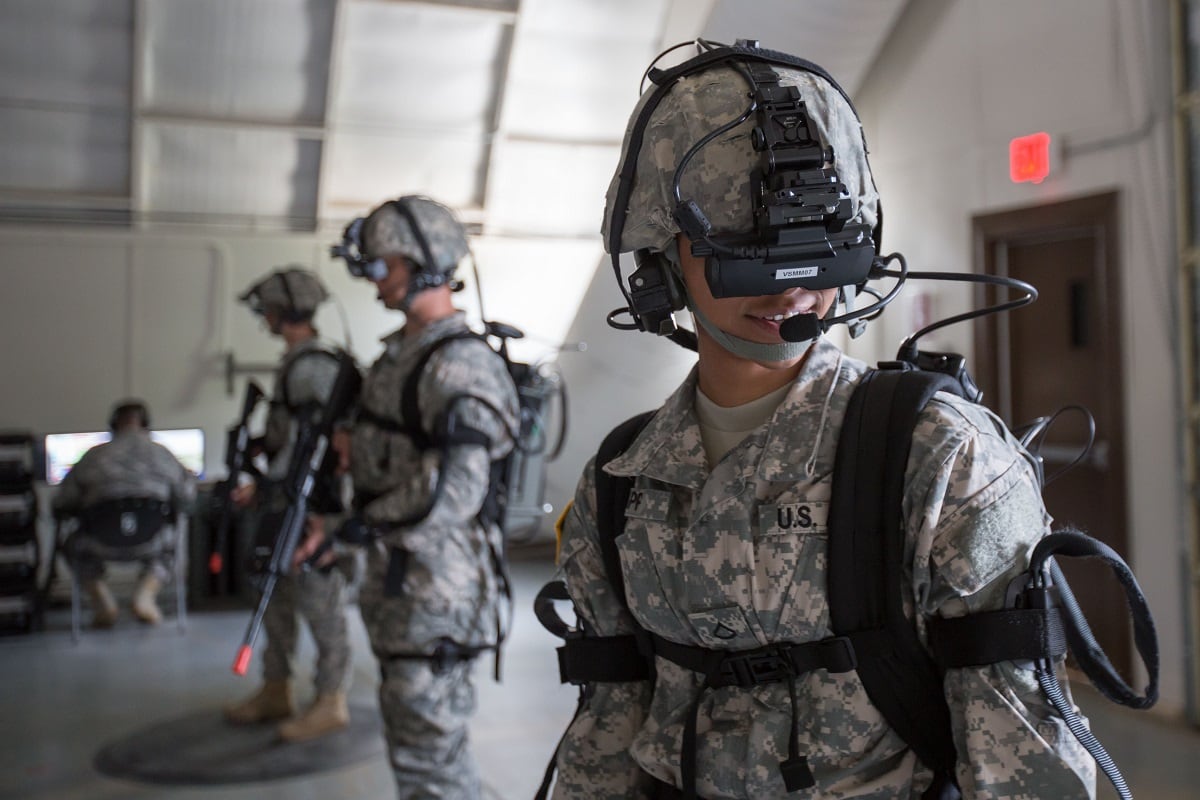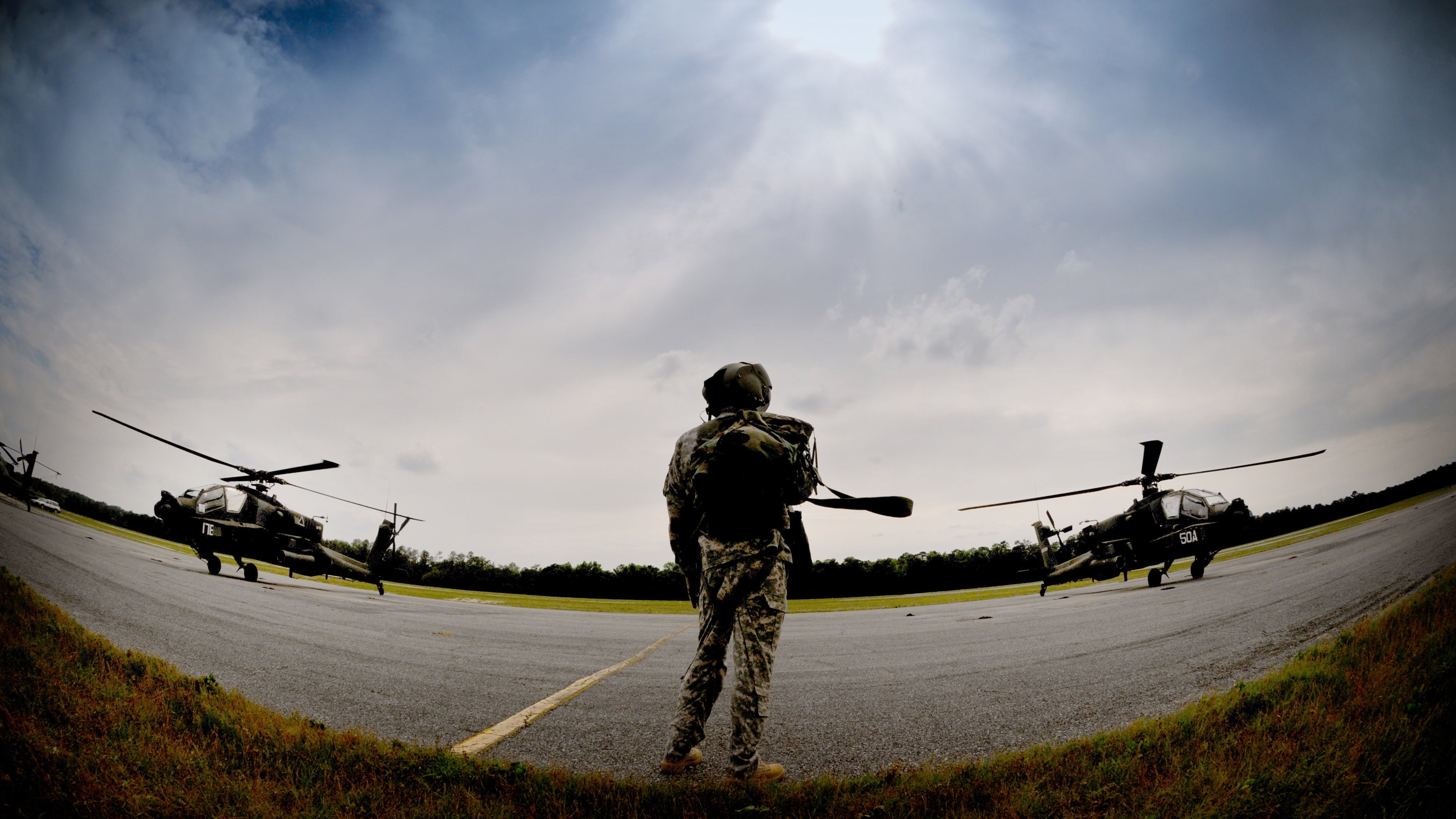WASHINGTON — The U.S. Army has been building a virtual world in which to train soldiers for war, and it’s expected to award contracts in June for reconfigurable virtual air and ground trainers and for a common synthetic environment that includes complex and real-life terrain.
Maj. Gen. Maria Gervais, who leads the Synthetic Training Environment Cross-Functional Team, which is part of Army Futures Command, told reporters during a recent media roundtable that she’s “encouraged” to see what her team accomplished since it formed roughly 18 months ago.
While the service, at a time, led the charge when it came to developing virtual environments, it has clung to relics of the ’80s and ’90s — stove-piped training systems lacking in realism.
As the Army shifts its focus to fighting in a multidomain environment, the service wants a new system that enables collective training across air, ground, sea, cyber and space with greater fidelity that can be used not only as a trainer but also as a mission-planning tool.
Before the synthetic training environment, or STE, was prioritized through the establishment of Army Futures Command, it wasn’t going to be ready until 2030, but Gervais shrunk that timeline through new approaches in development and acquisition by involving industry and soldiers in a collaborative and agile manner.
What is the STE?
Over the last 18 months, the components of the STE have taken shape and will consist of One World Terrain — which compiles realistic and accurate virtual maps of territory — training simulation software, a training management tool and virtual collective trainers. All of this will make up the soldier/squad virtual trainer and the reconfigurable virtual collective trainer.
The idea is to be able to click on any place on a virtual globe and go there. Soldiers can then train virtually in an exact environment in which they can expect to operate in reality. Just a few years ago, building One World Terrain was painstaking, tedious and expensive, but through new technology applications, what used to take nine months to build can now take eight hours.
RELATED

The training simulation software will support training simultaneously across many locations and training platforms.
The training management tool allows users to build training scenarios through simulation databases.

The virtual trainers are being designed for dismounted, air and ground formations to train from a squad level through battalion, and ultimately at higher echelons. The trainer for the soldier and squad will support individual and collective task at the smallest formation.
The reconfigurable virtual collective trainers, or RVCT, will represent Army and Marine Corps air and ground systems for training at the unit level and will be used for mission rehearsals at every echelon.
Ready player one
The Army plans to award contracts next month to build both an RVCT for aircraft and an RVCT for ground vehicles that are reconfigurable based on changes to platform inventories.
The STE conducted an initial user assessment of what had been developed in March 2018, Gervais said.
Since then, the Army has conducted more than 20 “touch points” with industry partners, which led to a user assessment in Orlando, Florida — where the STE cross-functional team is based — of One World Terrain, the training management tool as well as the training simulation software.
Meanwhile, Gervais said, the team is in the middle of a user assessment of an RVCT—Air prototype at Fort Carson, Colorado, which began in April and is supported by soldiers from the 4th Infantry Division.
RELATED

The service completed its assessment of a ground simulation platform that went to Fort Riley, Kansas. Crew members for Abrams tanks, Bradley Fighting Vehicles and Stryker combat vehicles of the 1st Infantry Division supported that effort.

One World Terrain is already in use and under evaluation by a Marine battalion as well as three divisions in the Army and Naval Special Warfare Command. It’s also used at the National Training Center and by the 3rd and 7th special forces groups.
All of the users are providing feedback, according to Gervais.
A contract was awarded in September 2018 to build the squad advanced marksmanship trainer, which is a product of the Close Combat Lethality Task Force initiative to improve soldier lethality and survivability, and the capability is already fielded to the 10th Mountain Division at Fort Drum, New York.
The new trainer takes what was a tethered system and — while it still uses projectors and screens — allows users to move around a base with more flexibility, which is more operationally realistic.
Ultimately, the projectors and screens could be replaced by a headset, which is in keeping with the service’s requirement to bring trainers to an operational unit in the field or at home station. This means the system must be easy to set up and transport.
“We will continue to field that out to the Army the rest of this [fiscal year],” Gervais said.
Taking it to the next level
The Army plans to use the other transaction authority, or OTA, contracting mechanism to award contracts next month to move quicker and more agile than the standard and often lengthy acquisition process.
The service previously used OTAs for STE development. “What the existing OTAs have done for us is they have actually allowed us to get a quick look from industry on where they were with the capabilities,” Col. Marcus Varnadore, the project manager for the STE CFT, said during the media roundtable.
“It was very important for us right up front to identify where industry really was with respect to the technology, which allowed us to then make some decisions about what path to go forward with, and it also allowed us, with that first OTA, to kind of get an idea of how we needed to structure our follow-on OTAs,” he added.
With the upcoming OTA contract awards, “we are kind of taking that and moving it to the next level using OTAs to bridge our gap here to get to the [initial operational capability] ... before we transition ultimately into a production [full-operational capability] environment,” said Brian Serra, the branch chief of Army Contracting Command—Orlando.
“We are using the flexibility of OTAs,” he added, “to adjust as we go so we are not married to a 100-page specification.” That translates to the CFT taking a two-year process and shrinking it to six months max.
The incremental process has also allowed the STE CFT to track industry’s progress in this arena. Gervais noted that in some cases, companies might have overstated a specific technology’s capabilities, and in turn the serve may need to bolster funding for internal science and technology efforts to improve that specific tech.
Alternatively, the Army might notice it’s been developing technology that is already well-developed in the commercial world.
“I’m very confident and comfortable that our efforts to date are going to keep us on track to meet an initial operational capability of fourth-quarter FY21,” Gervais said.
To reach initial operational capability, Gervais expects to field a battalion set of the RVCT—Air and RVCT—Ground — running on the common synthetic environment made up of One World Terrain, the training management tools and the training simulation software — to at least four installations.
Over the next two years following initial operational capability, the Army will expand that fielding to include all installations where the capability is required in order to reach full operational capability by FY23.
Jen Judson is an award-winning journalist covering land warfare for Defense News. She has also worked for Politico and Inside Defense. She holds a Master of Science degree in journalism from Boston University and a Bachelor of Arts degree from Kenyon College.





